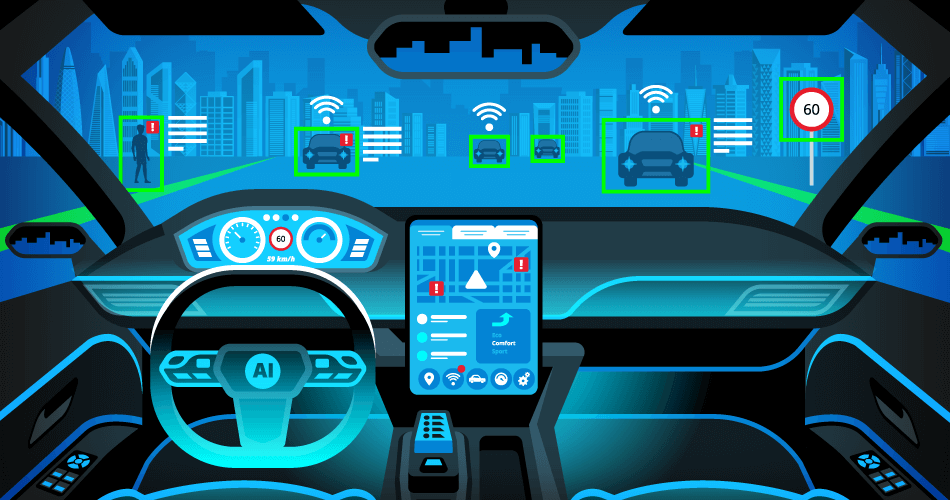
The idea of completely autonomous cars transporting people is no longer confined to the realm of science fiction. Multiple companies and the automotive industry are hard at work to bring this concept to reality.
However, it would take years before these studies will come into fruition since major hurdles are barring this advancement. Safety, moral conduct, legislation, public trust, software technology, engineering, and several factors are all playing a part. On top of that, there’s still the issue of repair and maintenance of these new vehicles.
A Near-Impossible Task
Of all the factors previously mentioned, safety remains the number one priority for obvious reasons. After all, one can’t simply make self-driving cars available without considering its potential safety risks. But discussing safety when it comes to self-driving cars can be tricky and even impossible given its requirements.
For autonomous vehicles (AV) to be safe, it’ll have to complete millions—or even billions—of miles of on-road testing. This will take a significant amount of time on the part of researchers, which they estimate will take hundreds of years before completion. And that isn’t mentioning the required budget for the tests to take place.
Given this impossibility, researchers have turned to other options such as simulations, closed courses, or tests on select public roads. Companies are also tackling different approaches to gather the data they need. Tesla is relying on data from its autopilot feature that’s already operational, for instance. Waymo, which is run by Google’s parent company Alphabet, on the other hand, is combining simulation with real-world testing.
But even with these corporate juggernauts at the helm of this endeavor, it’s still a far cry that AVs will replace the vehicles of today. At least not in the near future.
The Six Levels of Autonomous Driving
There are six levels that vehicles have to go through to be considered a true self-autonomous car. These include:
- Level 0 – At this stage, no self-driving capabilities are outfitted in the car and drivers are fully in control of the vehicle. Level 0 is where legacy automobiles fall.
- Level 1 – This is where cars can assist with braking or steering, but not both simultaneously. Cars with Adaptive Cruise Control (ACC) fall within this category.
- Level 2 – Tesla’s Model S, X, and 3 all fall in this section since they assist in steering and braking. However, the vehicle still needs to have a human driver present. The autopilot feature will also be disabled if the system detects that the driver fails to keep his or her eyes on the road.
- Level 3 – At level 3, drivers aren’t required to be fully aware of the situation because the system takes charge of the driving. However, it still poses a challenge. An impending collision, for instance, lowers the chances of the driver taking over at a moment’s notice.
- Level 4 – At the moment, Waymo is the only brand testing at level 4, which is confined to areas with predictable weather conditions. If rain and snow are involved, the system will not allow the self-driving feature.
- Level 5 – This stage is where autonomous driving truly takes place. But while level 5 cars are already on the road, it only carries groceries instead of people. The driving distance is also limited, so the data is only constrained to current research.
Waymo is poised to launch its autonomous long-haul trucks set to traverse the roads of Texas and New Mexico soon. Waymo has explained that it has chosen these pathways because they’re commercial routes and could hold the key to creating new transportation solutions.
Legislation is Muddy
According to the Association for Safe International Road Travel, nearly 1.25 million people die in road crashes every year, with 20 to 50 million getting injured or disabled. If autonomous cars can improve safety measures by merely 10%, then this translates to more lives saved. But even if it contributes to safer roadways, the legislation surrounding self-driving cars are still vague.
Identifying the Party at Fault
The problem is that there is no defined legislation that oversees self-driving vehicles. If an AV causes a pedestrian casualty, how do you identify the party at fault? Is it the software manufacturer, the engineers, or the car company itself? If a human driver is put in the same situation, it’s easy to determine who’s at fault. But with AV, the process isn’t as simple.
Fixing Vehicle Programming
There’s also the question of how to program the vehicle itself when it comes to making ethical decisions if a collision is unavoidable. Should the car veer towards a wall if it senses a potential crash? Or should it take its chances and drive into traffic? There’s still no clear answer to that question at the moment.
Decoding State & Government Policies
Adding to the complications is that the roles of the city, state, and federal government are vague when it comes to self-driving cars. Steven Shladover, a retired research engineer at the University of California Berkeley, highlighted the confusion surrounding the very subject. He shares that the self-driving feature is embedded within the vehicle, making it a corporate responsibility. But interacting with other drivers is a state responsibility, making it difficult to determine what regulations self-driving cars really fall under.
What the Future Holds
As mentioned earlier, it would take years before a level 5 autonomous vehicle can transport passengers across public highways. Even when that happens, it would take more time to replace conventional cars and hybrid self-autonomous vehicles on the road. That’s why at this point, it’s difficult to predict when a truly autonomous vehicle will be available for everyday use. But there’s no denying that once it’s developed, it will have a tremendous impact on society.
Transporting goods through self-driving trucks has the power to transform the shipping industry, however. Freeing up time spent on driving to focus more on other aspects like training, resting, and other tasks can boost overall productivity. And decreasing human errors in road-related accidents will save more lives. The only question that remains is whether society will be ready when this big change finally happens.




